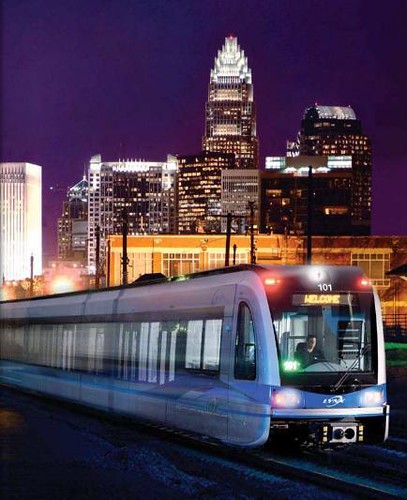Opposition to rail-based transit
is troubling to me, because when the system is designed properly, it works, and increases mobility, reduces dependence on automobiles, reduces congestion, stabilizes neighborhoods, helps attract new residents and businesses, and generates more vitality, not to mention increased property values and municipal income.
But it takes a long time for this to happen, to see the results. It took about 25 years in DC. (There were and are other issues in DC of course, including unsound municipal management.)
And it is dependent on some preconditions such as the creation of a transit system rather than a single line. And having extant high quality housing stock such as Victorian rowhouses, an urban design that promotes walkability as well as population density, infill development opportunities, and local commercial districts are all factors that make transit work much better, and yield benefits beyond mobility.
Or you can do it the Arlington County, Virginia way, and repattern your land use development in high-density ways to take advantage of rail access. That's harder to do where there are extant long standing and historic neighborhoods.
I have been paying some attention to the campaign to develop light rail in Honolulu, a place that someday I would like to visit. The anti-rail opposition is typical, skeptical of change, and pro-automobile. See for example "Mayor and governor trade barbs over rail" and "Mayor slams media and ‘attack’ over rail" from the Honolulu Star-Bulletin. The reason I find this ironic is the impact of transit in places like Washington, DC or Portland, Oregon is so clear. And the relative unsuccess of transit in places like Baltimore shows the right way and the wrong way to do things very clearly, just as the development of new rail lines in places like Minneapolis shows that to have real impact, you need multiple rail lines, you need a rail-based transit system, in order to have significant impact.

CINDY ELLEN RUSSELL . Honolulu Star Bulletin. Rail supporters held signs yesterday at a rally outside City Hall. The event was organized by the coalition Support Rail Transit and was attended by an estimated 200 supporters. Also yesterday, pro-rail Mayor Mufi Hannemann called Gov. Linda Lingle "wishy-washy" for her latest comments on rail transit plans.
A few weeks ago, the New York Times ran a story about the positive impact on resident and business attraction in Long Island from transit adjacency in "Transit as Downtown's Savior." I read that article around the same time I saw some of the coverage of the issue in Honolulu, with last fall's referendum against funding light rail in Charlotte, NC fresh in mind. That failed referendum was held about 3 weeks before the line opened.

Photo of Charlotte light rail by Steve Waters.
Labels: change-innovation-transformation, civic engagement, sustainable land use and resource planning, transit, transit oriented development



0 Comments:
Post a Comment
<< Home